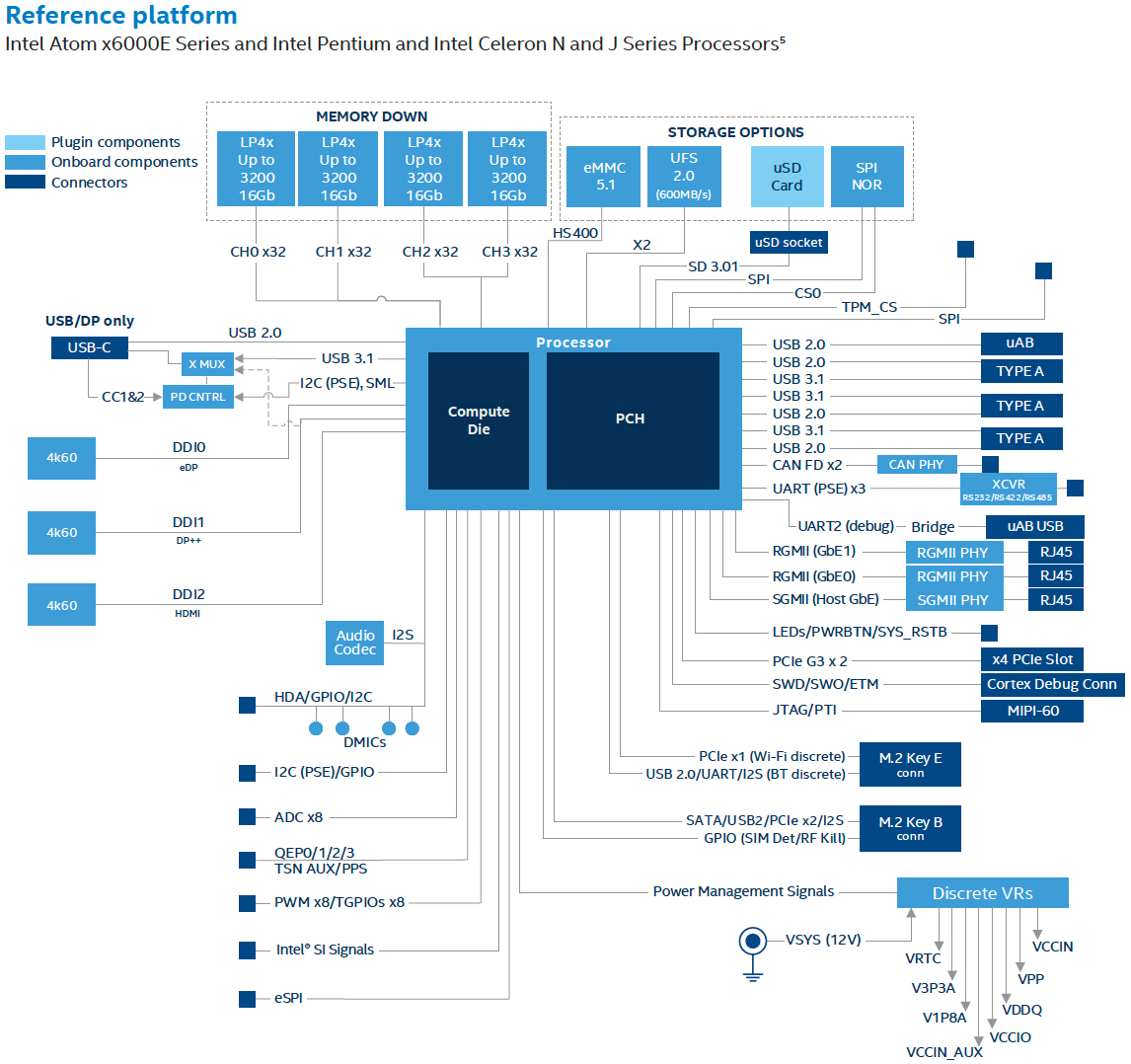Intel’s Atom x6000E ‘Elkhart Lake’ target service and edge applications
Intel launches ‘Elkhart Lake’ platform designed specifically for IoT devices

Intel has announced its new 'Elkhart Lake' family of low-power SoCs designed for various Internet-of-Things devices, such as edge and service applications. The new processors rely on Intel’s latest low-power Tremont microarchitecture along with Gen 11 graphics as well as rich I/O capabilities.
The Elkhart Lake lineup includes Atom x6000E as well as Celeron and Pentium J and N-series processors. The most advanced SoCs feature four Tremont cores running at an 1.90GHz base frequency, 1.5MB cache, Gen 11 graphics with up to 32 execution units, and a an up to 12W TDP.
In addition, select Intel’s Elkhart Lake processors support in-band error-correcting code (IBECC) to fix single-bit memory errors in non-ECC memory, TPM 2.0, AES-NI, Safety Island, Time Coordinated Computing, and Boot Guard security capabilities.
- We've built a list of the best mobile workstations out there
- There is also our list of the best business computers available
- Make sure to check the best ultrabooks around
Designed for IoT
Intel’s latest low-power Tremont cores along with Gen 11 graphics promise to increase performance by up to 1.5 ~ 1.7 times in CPU-intensive applications as well as by up to two times in 3DMark11. Performance gains are very important, especially since we are talking about SoCs for solutions that will be used in the next seven to ten years.

But what really sets the new Elkhart Lake SoCs apart from both predecessors and competitors are its I/O capabilities enabled by the processor itself as well as its platform controller hub (PCH) along with additional chips. In addition to supporting PC-specific interfaces like PCIe 3.0 x2, 2.5GbE, DisplayPort, eDP, HDMI, and USB Type-A/Type-C, it also supports UFS 2.0, eMMC 5.1, SD, and SPI/eSPI interfaces that are common in the mobile world and edge applications.

Intel’s Atom x6000E, Celeron J/N 6000-series, and Pentium J/N6000-series processors for embedded applications are supported by all modern operating systems, including high-level and real-time OSes. In addition, they are supported by Intel’s OpenVINO toolkit along with Media SDK.

Intel says that its Atom x6000E, Pentium, and Celeron N and J series SoCs already have over 100 partners committed to delivering products on their base.
Are you a pro? Subscribe to our newsletter
Sign up to the TechRadar Pro newsletter to get all the top news, opinion, features and guidance your business needs to succeed!

Anton Shilov is the News Editor at AnandTech, Inc. For more than four years, he has been writing for magazines and websites such as AnandTech, TechRadar, Tom's Guide, Kit Guru, EE Times, Tech & Learning, EE Times Asia, Design & Reuse.